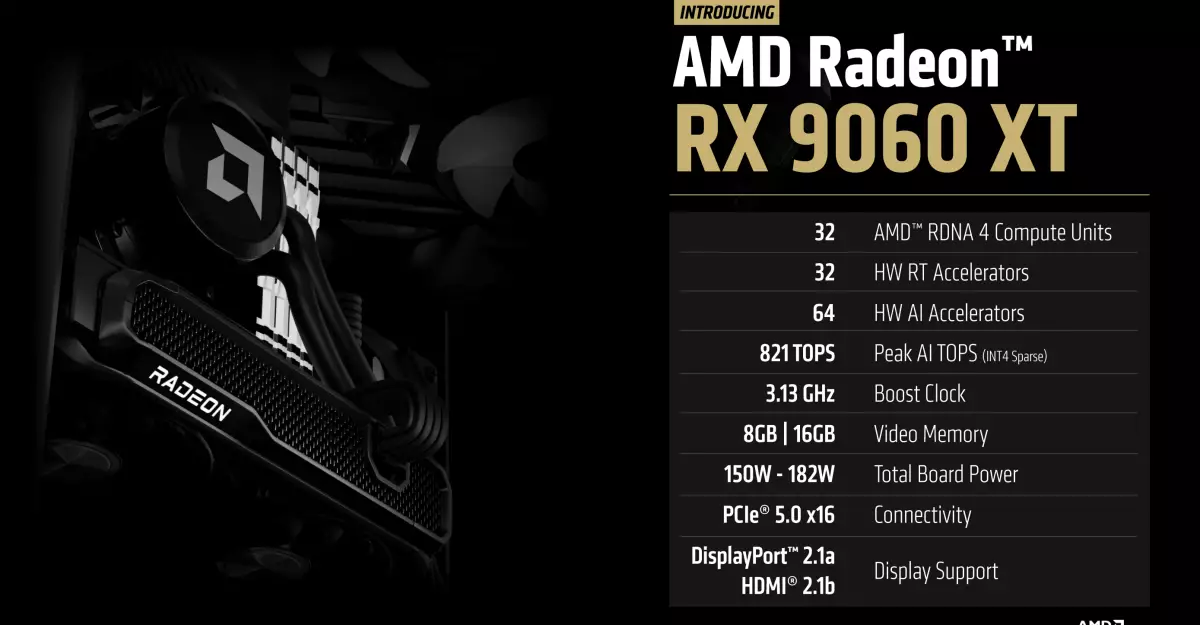At the recent Computex event, AMD unveiled its latest entry into the graphics card arena, the Radeon RX 9060 XT. The announcement comes at a time when the competition between AMD and Nvidia is heating up, with both companies jockeying for position in the rapidly evolving GPU market. While specifics regarding the pricing and release date remain shrouded in mystery, the 9060 XT stands out with promising specifications that are tailored for modern gaming demands.
Confronting Nvidia: The 8GB VRAM Controversy
In an environment where powerful GPUs are essential for a seamless gaming experience, AMD’s decision to follow Nvidia’s path by offering models with 8GB and 16GB of VRAM is quite provocative. The controversy surrounding 8GB of VRAM has been relentless, especially given the increasing demands of contemporary titles that are pushing hardware to its limits. As such, AMD’s choice risks alienating gamers who prioritize future-proofing their systems. Is AMD simply echoing Nvidia’s decisions, or does it genuinely believe this allocation will suffice in 2025? The gaming community is poised to weigh in on this critical aspect as benchmarks emerge.
Technical Specifications: A Closer Look
The RX 9060 XT is not only about VRAM; its architecture seems to promise substantial performance gains. Featuring 32 RDNA 4 compute units and a boost clock speed of 3.13GHz, this GPU should deliver an impressive output for gamers seeking high-quality visuals. Furthermore, support for advanced connection standards like DisplayPort 2.1a and HDMI 2.1b ensures that users are prepared for next-gen displays. With total board power ranging between 150 and 182 watts, it seems AMD has found a way to balance performance with efficient power consumption — a boon for gaming enthusiasts.
The Shadow of Nvidia’s RTX 5060
As AMD paves the way for its new GPU, the competition from Nvidia’s RTX 5060 looms large. Interestingly, Nvidia’s marketing strategy, which included a launch without prior reviews, raises eyebrows about their confidence in the product. The rumored limitations and Nvidia’s alleged restrictive practices regarding benchmarks have sparked significant dissatisfaction within the gaming community. AMD now has a compelling opportunity to capitalize on Nvidia’s missteps and position the RX 9060 XT as the more transparent and equitable choice for gamers.
Broader Implications for the Gaming Community
The developments of the RX 9060 XT and the ongoing 8GB VRAM debate are reflective of larger trends in the gaming industry. Gamers are not merely passive consumers; they are vocal and engaged participants in shaping the landscape. The contrasting approaches of AMD and Nvidia signal a critical juncture in how hardware developers cater to an increasingly discerning audience. Consumer backlash against perceived shortcomings in graphics cards can influence future product iterations and marketing strategies. As more details emerge about both the RX 9060 XT and the RTX 5060, the reactions and preferences of gamers will undoubtedly guide the next steps for these industry giants.

